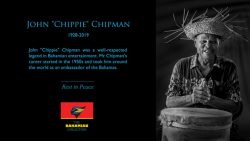There is an optimistic projection about the future of FirstCaribbean International Bank Ltd., according to an evaluation that Standard and Poorᄡs Ratings Services has completed.
It is the same agency that recently released a similar evaluation of The Bahamasᄡ sovereign credit rating.
モThe stable outlook reflects Standard and Poorᄡs Ratings Services expectations that FirstCaribbean will continue capitalizing on the strengths derived from its ownership and its good market position in the Caribbean region to expand its banking operations without breaching conservative practices,メ the agency reported.
2004 marked the first year that FirstCaribbean operated as one entity, after the amalgamation of Barclayᄡs Bank and the Canadian Imperial Bank of Commerce, two of the largest financial institutions operating in the Caribbean region. The transaction involved Barclayᄡs Bank PLC West Indies transferring its retail, corporate and offshore banking operations to subsidiaries of CIBC West Holding Ltd. in exchange for common shares of CIBC.
The bank has an asset base of approximately $8.6 million and has $1.2 billion in capital as of October 2004. It is one of the largest banks in the Caribbean region with some of its largest operations being in The Bahamas, The Cayman Islands and Barbados.
モThe ratings on FirstCaribbean International Bank Ltd are underpinned by its regional infrastructure, diversification and strong market share in the Caribbean; the success of its integration process and its good financial condition,メ noted the credit rating report, compiled by analysts based in Mexico City. モFirstCaribbean has a strong regional infrastructure that provides a competitive advantage over other Caribbean players.メ
The bank was also classified as having flexibility in managing individual exposure in countries with strong economic concentrations such as in the tourism sector.
But the analysts identified some challenges inclusive of expanding the business within a strong regional competitive environment. They reported that weaknesses included a limited economic diversification in the region of operation and the fact that strong regional competition is pressuring the bankᄡs margins.
Other elements, which are expected to be strategically tied to future developments, are the track records of Barclayᄡs and CIBC, an efficient cost structure and management plans. The projection is that the bank will continue to build a good capacity to generate earnings from both traditional domestic banking activities and offshore operations.
Turning their attention towards asset-liability management, the analysts noted that the evolution of deposits has been stable and as of October 2004 total deposits amounted to around $7.3 billion, remaining at similar levels compared to the previous year. Approximately 40 percent of deposits made were in U.S. dollars, with the remainder in local currencies and other hard currencies.
モFirstCaribbean takes deposits in excess of what it lends and maintains as mandatory reserves at central banks. As a result, the bank has surplus funds of close to $3 billion,メ the report said.
It was reported that the bankᄡs net interest has held at 4.7 percent with only a marginal decline from 2003. The level was described as adequate considering the high proportion of liquid assets and deposits maintained.
Net income for the year stood at $88.5 million partially explained by a $4.9 million reduction in integration costs, by lower allocations to reserves and by the lack of goodwill amortization as the bank implemented new IFRS and IAS accounting practices.
Many months ago, as bank branches of Barclayᄡs and CIBC were adjusting to the notion of an amalgamation, its workers who had feared for their futures were wedged in a protracted conflict with bank executives.
But in recent times, that conflict has simmered down.
Tameka Lundy, The Bahama Journal



